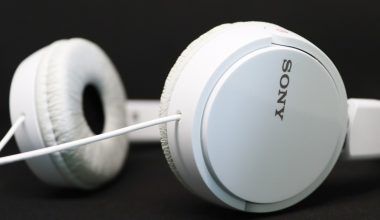Imagine this: you hear a song in a coffee shop that you really like, but you don’t know its name. You hum the tune, but no one around you seems to recognize it either. That’s when an audio identifier comes to your rescue. It’s a clever technology that listens to the audio, analyzes it, and identifies it by finding its match in a massive database. Within seconds, it tells you the song’s name, artist, and even the album.
An audio identifier is not only a handy tool for music lovers but also a game-changer for industries like advertising, gaming, and digital media. Therefore, in this blog, we’ll explore what an audio identifier is, how it works, and why it has become essential.
How Does an Audio Identifier Work?
Let’s break the process into simple steps:
- Listening to the Sound: When you use an app like Shazam, it “listens” to a small part of the music playing around you. In fact, it acts like a friend who’s trying to recognize the tune.
- Creating a Fingerprint: Every song has a unique “fingerprint.” This is a digital pattern that represents the song’s beats, tempo, and melody. Hence, this fingerprint becomes the key to identifying the song.
- Matching the Fingerprint: The audio identifier compares this fingerprint with millions of others stored in its database. If it finds a match, the song is identified.
- Providing the Results: Finally, the tool displays the name of the song, the artist, and other details in just a few seconds.
Why Are Audio Identifiers Important?
Audio identifiers are not just cool; they are highly practical. Here’s why they matter:
- Discovering Music: Have you ever had a tune stuck in your head but couldn’t recall its name? Audio identifiers solve that problem in seconds.
- Helping Artists Get Paid: Musicians put a lot of effort into their work. Audio identifiers ensure they get credit and royalties whenever their music is used.
- Protecting Copyrights: Unauthorized use of music is a big issue. Audio identifiers can quickly detect such cases.
- Enhancing Entertainment: Whether in games or movies, audio identifiers ensure that soundtracks and effects are perfectly aligned.
As a result, audio identifiers have become an integral part of the music and media ecosystem.
Where Are Audio Identifiers Used?
Audio identifiers have many practical applications, and their use continues to grow. Here are some of the key areas:
1. For Music Lovers
First and foremost, audio identifiers are a favorite among music lovers. Apps like Shazam make it possible to discover new songs by simply tapping a button. Moreover, they provide links to streaming platforms, making it easier to enjoy the music instantly.
2. For Content Creators
Content platforms like YouTube use audio identifiers to detect copyrighted music in videos. Therefore, creators are alerted when they use music without permission. Furthermore, the rightful owners are credited or compensated.
3. For Businesses
Advertisers rely on audio identifiers to track their commercials. For example, they can find out where their ads are playing and how often. Consequently, they can measure their campaign’s success with better accuracy.
4. For Gaming and Virtual Reality
In video games, audio identifiers sync soundtracks and effects seamlessly. Thus, they enhance the player’s experience and make gameplay more immersive.
How Audio Identifiers Simplify Life
Think of an audio identifier as a library assistant. When you show them a few lines from a book, they quickly locate the book and give you all its details. Similarly, an audio identifier takes a short snippet of a song, analyzes it, and tells you everything about it. Hence, they bring clarity and convenience to music recognition.
Benefits for Musicians
For musicians, audio identifiers are like a silent partner working behind the scenes. Here’s how they help:
- Getting Discovered: Tools like Shazam help listeners discover new music. When someone uses an audio identifier, they can instantly find out more about the artist.
- Tracking Plays: Audio identifiers allow musicians to see where their songs are being played. As a result, they can plan concerts or promotions in areas where they have a strong audience.
- Earning Royalties: By tracking every play, these tools ensure that musicians get paid fairly for their work.
Top Audio Identifier Tools
If you’re wondering which tools are the best, here’s a list:
- Shazam: Undoubtedly the most popular music recognition app.
- SoundHound: Unique because it lets users hum or sing to identify songs.
- ACRCloud: Preferred by broadcasters for its professional features.
- YouTube Content ID: Perfect for protecting creators from copyright issues.
- Audible Magic: Known for its strong focus on copyright management.
Challenges in Audio Identification
Despite their usefulness, audio identifiers face certain challenges:
- Noisy Environments: In places with a lot of background noise, it can be difficult for the tool to detect the song.
- Incomplete Databases: Sometimes, rare or independent tracks are not in the database, and the tool fails to identify them.
- Occasional Errors: In rare cases, the system may confuse one song with another.
Nevertheless, developers are constantly working on improving these tools.
Protecting Copyrights with Audio Identifiers
Copyright protection is a major reason why audio identifiers are so important. Here’s how they help:
- Preventing Piracy: Audio identifiers can detect unauthorized use of music and alert the creators.
- Ensuring Fair Payments: Every time a song is played, audio identifiers make sure that the artist or label gets paid.
- Resolving Ownership Disputes: If two parties claim ownership of a song, audio identifiers can provide proof based on fingerprints.
Thus, they ensure fairness in the music industry.
The Future of Audio Identifiers
The technology behind audio identifiers continues to evolve. Let’s look at what the future holds:
- Increased Accuracy: With advancements in AI, audio identifiers will become more reliable, even in noisy environments.
- Larger Databases: More songs and sounds will be added, covering a wider range of music.
- Integration with Smart Devices: In the future, your TV, car, or even smartwatch could have built-in audio identifiers.
- New Applications: From personalized playlists to advanced security systems, audio identifiers will find many more uses.
How to Start Using Audio Identifiers
It’s incredibly easy to use audio identifiers. Here’s how:
- Download an App: Popular apps like Shazam and SoundHound are free and simple to use.
- Use Virtual Assistants: Ask Siri or Google Assistant, “What song is playing?” They’ll use audio identifiers to give you the answer.
- Try Professional Platforms: Tools like ACRCloud are perfect for businesses and creators.
Conclusion: Why Audio Identifiers Are Essential
Audio identifiers have changed the way we interact with music and sound. They make it easy to discover songs, protect copyrights, and even improve entertainment experiences. For artists, they are a way to ensure recognition and fair payment. For listeners, they are a convenient way to connect with the music they love.
Related Articles:
For further reading, explore these related articles:
- How to Become a Successful Music Artist in India in 2024?
- Promo Cards on Spotify: A Game Changer for Artists
For additional resources on music marketing and distribution, visit Deliver My Tune.






